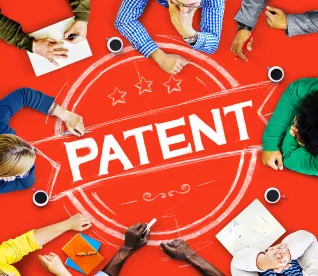For consumer product companies, the Examiner interview has heightened importance and presents a unique opportunity for success. Because product lifespans are often brief and knockoffs find their way into the market quickly, a short path to allowance is critical. Given the tangibility of consumer products like apparel, hand tools, housewares, and everything in between, practitioners have the chance to provide hands-on instruction as to what makes a claimed product distinctive. Effective use of interviews can be the difference between securing protection that coincides with hot product sales and wading through protracted prosecution at the USPTO while competitors infiltrate the market.
Besides the obvious need for being well prepared for the interview, there are several best practices that consumer product practitioners should employ to increase the likelihood of compact, successful prosecution.
Take advantage of interview opportunities at all stages of prosecution. The opportunity for interviewing a case presents itself at all stages of prosecution.
-
Before First Office Action: Before receiving a first action on the merits, practitioners should consider using the First Action Interview Pilot program. As a potentially less costly alternative to Track One examination, FAIP provides an opportunity to directly communicate with the Examiner very early in prosecution of utility cases. As of December 2016, the first action allowance rate for FAIP cases was 31.1%. Details and requirements of the program are found at: https://www.uspto.gov/patents-application-process/applying-online/full-first-action-interview-pilot-program.
-
After First Office Action: Interviews are usually granted at this stage. The Examiner will likely require an interview agenda, and the developing trend is that the Examiner will make the agenda of record even if it is submitted with a request that it not be entered. Still, the interview provides an efficient way to present arguments to the Examiner with fewer remarks on the record and reduced estoppel pitfalls. Consider conducting the interview before or after filing a reply depending on the complexity of the case and whether amendments are an option.
-
After Final Office Action: Although the Examiner may exercise discretion in granting an interview after final, the MPEP indicates that one interview after final is permitted. When willing to narrow an independent claim by amendment, interviewing through the After Final Consideration Program 2.0 is a particularly effective tool. Without an additional fee for the Applicant and with additional search time for the Examiner, the parties may proceed in a collaborative attempt to reach allowance after final. Examiners are typically motivated to conduct a quality search and to carefully consider targeted amendments to reach a resolution in the case.
Simplify scheduling. It is obvious, but Applicants can shorten prosecution time by simply scheduling interviews more quickly and efficiently. Rather than a game of phone tag with the Examiner, practitioners should take advantage of the USPTO Automated Interview Request (AIR) form, a web-based tool that allows Applicants to more easily schedule an interview for their pending patent application. The Applicant may identify the type of interview desired – telephonic, in-person, video conference – and propose a date and time more than one week from submission. Examiners typically confirm the interview proposal in less than 24 hours. The USPTO AIR form can be found at: https://www.uspto.gov/patent/uspto-automated-interview-request-air-form.
Show and tell. Recognizing there are always time and resource constraints to consider, consumer product practitioners should conduct in-person interviews whenever possible. With these interviews, the product being protected and even the competitor knockoff being targeted are made accessible to the Examiner and can be displayed, held, felt, and operated. Although using product "props" will not inappropriately persuade the Examiner, practitioners should not underestimate the Examiner's interest in understanding the product and its R&D story.
Although scheduling and conducting an in-person interview can be more challenging with today's dispersed Examining corps, it can lead to better results, particularly when the underlying product is incorporated. When the Examiner is unavailable at the Office, request permission to send the Examiner a product (with suitable return packaging). Then conduct the interview via video conference while they literally examine it.
Consider including a key inventor. While not unique to consumer product cases, having a key inventor participate can significantly improve the quality of the interview. Where the product has a unique development story, there is no better messenger than the individual responsible for bringing it to store shelves and commercial airwaves. And even though the inventor is clearly biased for the Applicant, Examiners still tend to trust and appreciate an inventor's explanation more than an attorney's argument.
When done well, Examiner interviews are part of every successful utility and design patent prosecution strategy. For consumer product practitioners, they can be a particularly effective tool for advancing prosecution, and, hopefully, obtaining protection early in a product's commercial lifespan.




 />i
/>i


